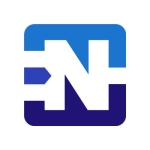What is our primary use case?
The main use cases are firewalling, routing, site-to-site VPN, and remote access. We have some older 5585-X ASAs in place. We do have Firepower 2000 Series and 4000 Series.
For most setups, we do have high availability in place. We've at least two devices in active-active or active-standby. If it's a highly secure setup, we sometimes have two firewalls.
How has it helped my organization?
Cisco has a huge variety of products and features. It's a benefit to have the knowledge of all those things and also put it in the firewalling products. The knowledge that comes from other products or solutions that Cisco is selling is finding a place in security as well, and that's one of the key benefits.
There are time savings when you have a good solution in place for stopping or preventing security risks. In general, it isn't saving me time on a daily basis, but there is peace of mind knowing that you are being protected.
What is most valuable?
Basic firewalling is obviously the most valuable. In addition to that, secure access and remote access are also very useful for us. When COVID came, a lot of people had to stay at home, and that was the basic use case for having remote access.
What needs improvement?
One con of Cisco Secure Firewalls is that Java is used a lot for the older generation of these firewalls. Java is used for the ASA and the ASDM tool for administration. It's an outdated way of administering, and it's also a security risk to use this kind of solution. This is a pro of Firepower or the newer generation of firewalls because they are using HTML for administration.
In general, they can make it easier to manage the solutions. They can make it easier in terms of administration and provide a single tool for different firewalling solutions. They have different tools to manage different firewalls, such as Firepower or ASA. Sometimes, both are on the same thing. You have ASA with Firepower modules, so you manage some of the things via HTML, and then you manage some of the things via another management tool. It's not seamless. It should be bundled together in one solution.
For how long have I used the solution?
I have been using this solution for six to seven years.
What do I think about the stability of the solution?
They have been very stable. I did not have any cases where a network was down due to firewalling. Fortunately, I did not have any hacker attacks, but that's being lucky. It's not something I would point out to firewalling or configuration. It's just that sometimes you're lucky and sometimes you're not.
What do I think about the scalability of the solution?
It's very scalable. Cisco is for mid to large businesses. For small businesses, there are solutions that are cheaper, but that's not the main focus.
A large environment comprises several thousand users. We have small to large size environments, but we mostly have mid to large.
How are customer service and support?
Cisco's tech support is good in general. It varies and depends on with whom you're speaking and how the knowledge on the other side is. That's basically the same for our company. I'd rate them an eight out of ten. A ten would be perfect, and no one is perfect. You can reach maybe a nine, but no one can reach a ten.
How would you rate customer service and support?
Which solution did I use previously and why did I switch?
For more security, we sometimes have two firewalls. We have other vendors in place, such as FortiGate or Palo Alto. We have Cisco at the front or at the end, and another vendor on the other side so that there is more security, and if there is a security breach in one solution, we still have the other one. These firewalls differ mostly in administration and how you configure things but not so much in terms of features. They may differ in small things, but in the end, they are all doing the same things.
How was the initial setup?
I deploy and manage them afterward. I'm not only in the designing and implementing; I'm also in the operational business. Its deployment is not more complicated than other solutions. It's fine. When it comes to documentation, in general, Cisco is very good.
What about the implementation team?
We mostly try to do it ourselves. Our approach is to have knowledge or any certification of the topic we are trying to take.
What was our ROI?
I'm not a salesperson. I'm more from the technical perspective, and I don't know if there are any savings at the end, but I believe that all that was bought in the past was used the way we wanted it to use. So, the money was well spent.
What's my experience with pricing, setup cost, and licensing?
Licensing is not only for Secure Firewalls, and it's too complicated.
What other advice do I have?
To someone evaluating or considering Cisco Secure Firewall, I'd advise having a good greenfield approach regarding what component to use. If there is no greenfield, you should evaluate what solutions you need and what type of use case you have and then decide based on that.
I'd rate Cisco Secure Firewall an eight out of ten. Cisco is a big player in networking and security, and that's basically the pro on their side.
Which deployment model are you using for this solution?
On-premises
Disclosure: My company does not have a business relationship with this vendor other than being a customer.















